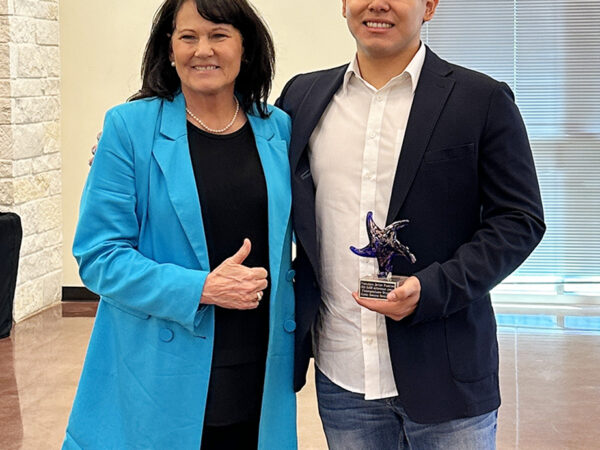
Combatting Childhood Obesity
Obesity rates in the United States have tripled in the last 30 years.
In a world where children are starving, it is hard to imagine that any child could be obese. But in today’s society, childhood obesity is a reality.
According to the Centers for Disease Control and Prevention, childhood obesity rates in the United States have tripled in the last 30 years. In fact, just four years ago, more than one-third of children and adolescents were overweight or obese.
Using two approaches to silence this national epidemic, including changes to policy and identification of emotional eating behaviors one-third of children and adolescents are overweight or obese, one in 7 low-income preschool-aged children is obese, and obese children are more likely to become obese adults.
Instead of walking to school and playing outside until dinner, kids ride the bus and rush home to sit in front of the TV, play video games or search the Internet. How did this happen?
Children today lead very different lifestyles than their parents. Instead of walking to school and playing outside until dinner, kids ride the bus and rush home to sit in front of the TV, play video games or search the Internet. With less and less time to prepare home-cooked meals, fast food has become a way of life for many families. And children today eat and snack more than generations before them.
To combat this problem, the state of Texas has implemented a number of policies that focus on the environmental factors that contribute to childhood obesity.
E. Lisako McKyer, associate professor of health education, is part of a multidisciplinary research team charged with reviewing two of these policies.
TWO NEW POLICIES
The first is the implementation of Texas Safe Routes to School, which supports finding ways for children to safely walk and bike to school.
The second is a change to the Women, Infants and Children (WIC) program, which provides food assistance to low income families, to include healthier options in their food packages.
McKyer notes that WIC participants previously could not use their WIC benefits to purchase fresh fruits and vegetables, as well as a number of whole-grain products. This has changed recently.
“What we’re expecting to see is that retailers will have changed how they display the products in accordance with WIC policies. Whole-grain products that were below eye-level will now be more prominently displayed,” McKyer says.
Because shoppers are naturally inclined to grab the first product they see on the shelf, McKyer believes this WIC change will have larger implications.
“A policy that was designed to influence a subset of people really does have a larger impact because everyone shops at these stores, not just WIC shoppers,” McKyer says. “Here’s an example of a policy that is meant to impact at-risk people having beneficial effects at the population level.”
McKyer expects to see significant results in the areas where the policies overlap. In theory, these regions will have more children exercising by walking or biking to school and eating more nutritious foods. The idea is that by creating an environment where healthy life choices are easier to make, children and adults will reap the health benefits.
CHANGE IN WIC BENEFITS
We’re expecting to see retailers change how they display fresh fruits and vegetables, as well as a number of whole-grain products in accordance with WIC policies.
The idea is that by creating an environment where healthy life choices are easier to make, children and adults will reap the health benefits.
Associate professor and developmental psychologist Jeffrey Liew has a different approach in mind. He and Marisol Perez, a clinical psychologist and assistant professor, have spent the past two years collecting data to identify the factors that may contribute to young children’s emotional eating, which can lead to obesity or eating disorders later in life. The team’s goal is to determine both risk and protective factors that are important for interventions to target in fostering healthy eating habits among children.
Their research, funded by the National Institute of Child Health and Human Development, is innovative in its combination of research regarding child development, emotional eating and obesity that leads to the theory that problems with emotion regulation predisposes children to emotional eating (i.e., the tendency to eat when not hungry to cope with stress or negative emotions), which can then predispose them to become overweight.
“By combining the parenting and developmental aspects of eating, we hope to develop a cost-effective program for parents to teach their children to better regulate their emotions and not use food as a coping mechanism,” Perez explains.
During the two-year study, approximately 250 children — half white, half non-white — were assessed on their performance in several tasks that cause a variety of emotions mimicking children’s everyday experiences while connected to physiological equipment that monitors their ECG and breathing. The children were also asked to participate in a task designed to observe not only how much they eat but what types of foods they eat.
Liew explains that in addition to collecting physiological and behavioral data, parents provided information on their feeding styles and practices of their children.
“Developmental research tells us that obese children generally do not grow out of their obesity when they become adolescents, and ethnic disparities have been observed, with higher incidences of overweight children among Hispanics than Caucasians,” Liew says.
“We are focusing our attention on childhood and parenting factors that may either protect children against or put children at risk for future overweight problems, and will examine whether these protective and risk factors for emotional eating are similar or different across ethnic groups.”
For media inquiries, contact our Media Relations Coordinator, Ashley Green.
Fundraising
To learn more about how you can assist in fundraising, contact Amy Hurley, Director of Development ahurley@txamfoundation.com or 979-847-9455














